Las cubiertas de la piscina que se agrietan, conservan el calor y se vuelven peligrosamente resbaladizos cuando húmedos son las principales preocupaciones para los propietarios de piscinas. El concreto y los adoquines tradicionales a menudo se quedan cortos, dejando a los propietarios frustrados con constantes riesgos de mantenimiento y seguridad en torno a su inversión.
Piedra suelta Las cubiertas de piscina ofrecen una alternativa convincente que aborda estos problemas de frente. Con capacidades de drenaje superiores, atractivo estético natural y costos de instalación significativamente más bajos, la piedra suelta está ganando popularidad entre los constructores de piscinas y los propietarios de viviendas que buscan un brote de piscinas funcionales y hermosos. Esta guía completa explora todo lo que necesita saber sobre la implementación de esto viaje-o morir Solución para el área de su piscina, desde seleccionar los materiales adecuados para garantizar la estabilidad y el rendimiento a largo plazo.
El encanto de la piedra suelta: beneficios y versatilidad de diseño para mazos de piscina
Cuando busca crear una impresionante área junto a la piscina que se destaque de los diseños de cortador de galletas, las cubiertas de piscina de piedra suelta ofrecen una alternativa convincente a los materiales tradicionales. Natural, versátiles y funcionales, estas superficies distintivas traen un toque de elegancia orgánica que el concreto simplemente no puede igualar.
Las cubiertas de piscina de piedra suelta proporcionan drenaje superior, estética natural y rentabilidad en comparación con los materiales de cubierta de piscina convencionales, al tiempo que requieren un mantenimiento mínimo para los propietarios de viviendas que buscan un valor a largo plazo.
Estética natural: mejorar el atractivo visual de su piscina
Hay algo inherentemente atractivo sobre el encanto rústico de la piedra suelta que rodea una piscina. A diferencia de la apariencia uniforme del concreto, cada piedra trae su propio carácter a su espacio al aire libre. Las variadas texturas, colores y formas crean un “asombroso” Impacto visual que transforma un grupo ordinario en un oasis natural.
Cuando se instala correctamente, un suelto La cubierta de la piscina de piedra se integra perfectamente con el paisajismo circundante, creando un entorno cohesivo al aire libre que se sienta diseñado intencionalmente en lugar de construir artificialmente. El Variaciones naturales en piedra La coloración también ayuda a disfrazar las manchas de agua y la meteorización que serían inmediatamente visibles en las superficies de concreto.
Drenaje superior: seguridad y beneficios prácticos
Una de las ventajas más significativas de la piedra suelta como material de la cubierta de la piscina es su excepcional capacidad de drenaje. El agua pasa libremente entre piedras, eliminando los charcos y el agua estancada común con superficies sólidas. Este sistema de drenaje natural reduce significativamente los riesgos de deslizamiento alrededor del área de su piscina.
La naturaleza porosa de las instalaciones de piedra suelta también ayuda a administrar la escorrentía del agua de lluvia, dirigiéndola nuevamente al suelo en lugar de los sistemas de drenaje abrumadores. Este beneficio ambiental combina seguridad práctica con la gestión responsable del agua para su propiedad.
Rentabilidad: inversión inicial versus valor a largo plazo
Si bien los costos de instalación inicial varían según la selección de piedra, las cubiertas de piscina de piedra suelta generalmente requieren una inversión inicial más pequeña que los adoquines o el concreto vertido. La siguiente tabla compara factores financieros y prácticos clave con las opciones populares de cubierta de piscinas:
Comparación de material de la cubierta de la piscina (análisis de mercado 2023)
| Factor | Piedra suelta | Concreto | Adoquines | Cubierta compuesta | Baldosas de piedra natural |
|---|---|---|---|---|---|
| Costo inicial (por sq.ft) | $ 5- $ 10 | $ 7- $ 15 | $ 10- $ 20 | $ 15- $ 30 | $ 18- $ 35 |
| Complejidad de instalación | Moderado | Alto | Alto | Moderado | Muy alto |
| Vida útil (años) | 15-20 | 10-15 | 15-25 | 10-15 | 20-30 |
| Costo de mantenimiento anual | $ 0.30/pies cuadrados | $ 0.50/sq.ft | $ 0.45/sq.ft | $ 0.60/sq.ft | $ 0.75/sq.ft |
| Retención de calor | Bajo | Muy alto | Alto | Moderado | Moderado |
La relativa facilidad de reparaciones representa otra ventaja de costo. Si se produce daños en un área específica, simplemente puede reemplazar las piedras afectadas en lugar de lidiar con reparaciones de concreto extensas o realineación de pavimentos.
Aspectos ecológicos: diseño de piscina sostenible
Para los propietarios de viviendas con consciente ambiental, Loose Stone ofrece ventajas significativas sobre los materiales manufacturados. Como producto natural, la piedra requiere un procesamiento mínimo en comparación con los materiales de concreto o compuestos, lo que resulta en una huella de carbono sustancialmente más pequeña.
Los beneficios de piedra suelta Alrededor de las piscinas se extienden más allá de las consideraciones de fabricación. La permeabilidad de las instalaciones de piedra permite que el agua se filtre naturalmente en el suelo, reduciendo la escorrentía y apoyando sistemas saludables de agua subterránea. Esta calidad permeable puede incluso ayudar a cumplir con las regulaciones locales para limitaciones de superficie impermeables en algunas áreas.
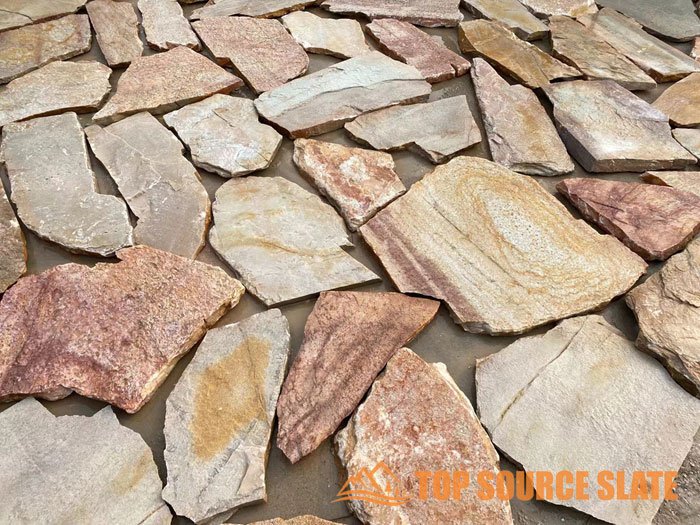

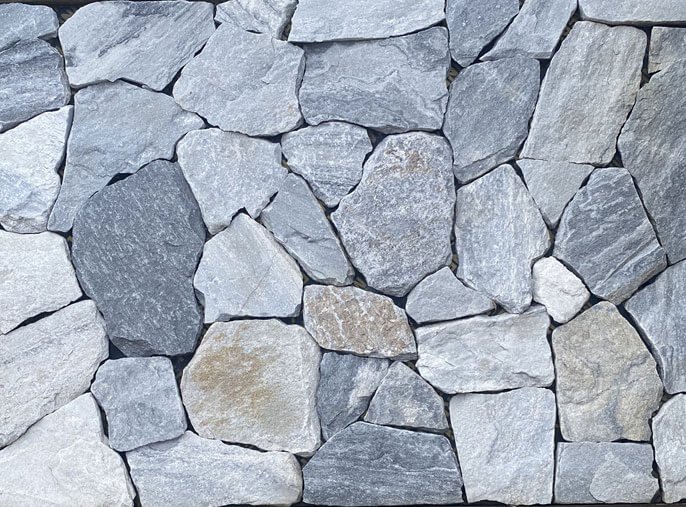
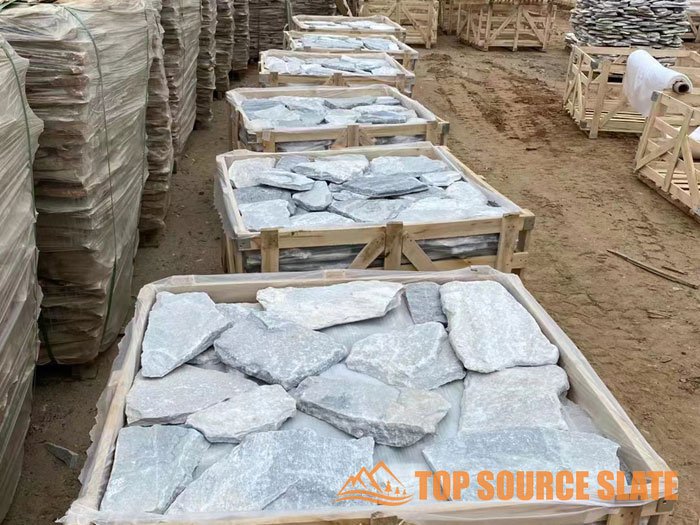
Piedra suelta de la pizarra de la fuente superior Las opciones muestran una variedad excepcional en colores y texturas, lo que permite entornos de piscinas verdaderamente personalizados que reflejan su estilo personal. Desde tonos de tierra cálidos hasta grises azules fríos, sus piedra natural Las selecciones proporcionan flexibilidad de diseño mientras mantienen los beneficios prácticos de las cubiertas de piscina de piedra suelta.
Essentials de instalación: una guía paso a paso para una cubierta de piscina de piedra suelta estable e impresionante
Instalar una cubierta de piscina de piedra suelta puede transformar su espacio al aire libre con belleza natural al tiempo que proporciona beneficios prácticos como drenaje mejorado y comodidad bajo los pies. Sin embargo, la instalación adecuada es crucial para garantizar la longevidad y la seguridad. Esta guía integral lo guía a través de los pasos esenciales para crear una plataforma de piscina de piedra suelta duradera y atractiva que mejorará su experiencia junto a la piscina en los próximos años.
Una cubierta de piscina de piedra suelta adecuadamente instalada requiere una preparación de tierra completa, soluciones de bordes apropiadas, una selección de piedra cuidadosa y técnicas de instalación adecuadas para garantizar la estabilidad, el drenaje y el atractivo estético alrededor del área de la piscina.
Preparación del suelo: construir una base sólida
El éxito de su cubierta de piscina de piedra suelta comienza mucho antes de colocar la primera piedra. Comience eliminando a fondo toda vegetación, materia orgánica y tierra vegetal del área de instalación. Esto evita que el futuro asentamiento y el crecimiento orgánico que podrían desestabilizar su mazo.
Luego, cree una ligera pendiente (alrededor de 1/4 de pulgada por pie) lejos de su piscina para fomentar el drenaje adecuado. Compacte el suelo usando un compactador de placa para crear una base sólida, luego agregue una capa de 4-6 pulgadas de grava triturada o piedra caliza como sub-base. Esta capa también debe compactarse a fondo para evitar el cambio futuro.
Finalmente, agregue una capa de arena gruesa de 1-2 pulgadas como cama de ajuste. Nivele esto con cuidado, ya que afectará directamente cómo aparece su cubierta de piscina de piedra suelta terminada. Tomar tiempo durante esta fase de preparación reduce significativamente los dolores de cabeza de mantenimiento más tarde.
Soluciones de bordes: que contiene su diseño
El borde efectivo es crucial para mantener la integridad de su cubierta de piscina de piedra suelta. Sin una contención adecuada, las piedras migrarán gradualmente hacia afuera, creando una superficie desigual y potencialmente peligrosa. Varias opciones de bordes ofrecen beneficios funcionales y estéticos:
Comparación de bordes de la cubierta de la piscina por material y aplicación
| Tipo de bordes | Material | Dificultad de instalación | Durabilidad | Rango de costos (por FT lineal) | Mejor aplicación |
|---|---|---|---|---|---|
| Bordes de paisajes de metal | Aluminio/acero | Moderado | 7-15 años | $ 4- $ 10 | Diseños curvos, aspecto moderno limpio |
| Bordes de plástico/compuesto | HDPE/Materiales reciclados | Fácil | 5-10 años | $ 2- $ 5 | Instalaciones presupuestarias, bricolaje fácil |
| Piedra natural Fronteras | Granito/piedra caliza | Difícil | Más de 20 años | $ 15- $ 30 | Instalaciones de alta gama, estética natural |
| Frunciendo de hormigón | Hormigón vertido | Muy difícil | 15-20 años | $ 10- $ 25 | Estabilidad máxima, instalación profesional |
| Bordes de madera | Treado de cedro/presión | Moderado | 5-7 años | $ 6- $ 12 | Diseños rústicos, secciones elevadas |
Por un “sólido” Instalación, instale el borde elegido antes de colocar piedras. Asegúrelo firmemente de acuerdo con las especificaciones del fabricante, asegurando que se extienda al menos 1-2 pulgadas por encima de su superficie de piedra terminada para una contención efectiva.
Selección de piedra: elegir los materiales correctos
El tipo de piedra que selecciona afecta drásticamente tanto la apariencia como la funcionalidad de su cubierta de piscina de piedra suelta. Considere estos factores críticos al hacer su selección:
La consistencia del tamaño es importante para la estabilidad – Piedras entre 3/8″ y 3/4″ Ofrezca un equilibrio ideal entre la comodidad de los pies y la capacidad de drenaje. Las piedras angulares se entrelazan mejor que las redondeadas, creando una superficie más estable. Para obtener la máxima comodidad, evite piedras extremadamente pequeñas que puedan volverse incómodas debajo de los pies o piedras más grandes que crean una superficie de caminata desigual.
Considere tanto el clima como el diseño de su piscina al seleccionar colores de piedra. Las piedras más ligeras reflejan el calor en entornos soleados, pero muestran escombros más visiblemente. Top Source Slate ofrece opciones de piedra directa de fábrica con dimensiones y calidad consistentes, asegurando que su cubierta de piscina mantenga su belleza a través de años de uso.
Técnicas de instalación: reunirlo todo
Con una preparación adecuada completa, extienda las piedras elegidas uniformemente por el área preparada a una profundidad de 2-3 pulgadas. Use un rastrillo de paisaje para distribuirlos de manera uniforme, luego rocíe ligeramente la superficie con agua para ayudar a establecer las piedras.
Para una estabilidad mejorada, considere usar un compactador de placa con un accesorio de estera de goma para comprimir suavemente las piedras. Esto reduce significativamente el acuerdo futuro sin dañar la piedra. Finalmente, supere las áreas bajas con piedra adicional y repita el proceso de asentamiento según sea necesario.

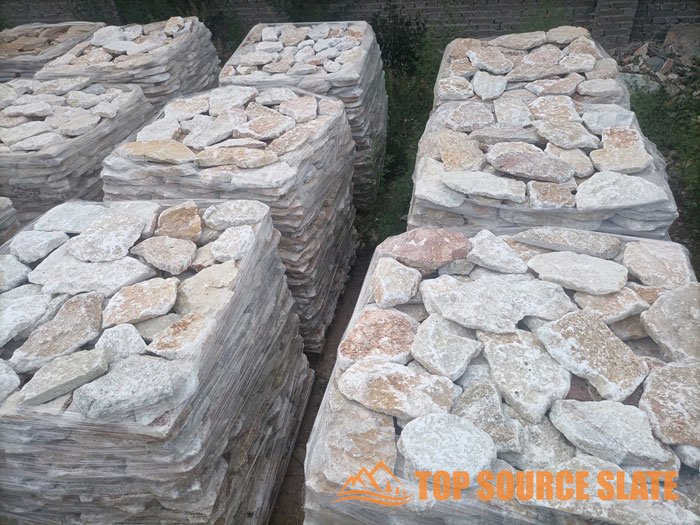
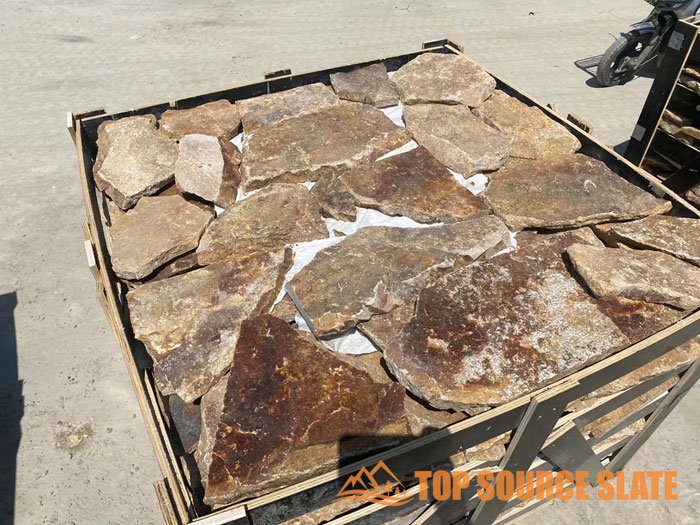

Mantenimiento y selección de piedra: garantizar la longevidad y la belleza para su cubierta de piscina de piedra suelta
Una hermosa cubierta de piscina de piedra suelta requiere un mantenimiento reflexivo y una selección informada de piedra para preservar su atractivo natural y funcionalidad. Con el cuidado adecuado y los materiales adecuados, su envoltura de piscina puede seguir siendo una característica acogedora al aire libre durante muchos años, ofreciendo encanto estético y beneficios prácticos.
El mantenimiento regular combinado con la selección estratégica de piedra son factores clave para maximizar la vida útil y la apariencia de mazos de piscina de piedra suelta, con las opciones de material adecuadas que afectan significativamente los requisitos de durabilidad y mantenimiento a largo plazo.
Mantenimiento de rutina: pasos simples para la belleza duradera
Mantener una cubierta de piscina de piedra suelta no exige procedimientos complejos, pero la consistencia es crucial. Comience con rastrillo regular para mantener el nivel de la superficie y distribuido uniformemente, especialmente después de una fuerte lluvia o un alto uso de piscinas. Esta simple práctica evita puntos bajos donde el agua podría acumularse y ayuda a mantener una apariencia uniforme.
La limpieza periódica con un enjuague suave de una manguera de jardín elimina la suciedad, los escombros y cualquier químico de la piscina que pueda haber salido sobre las piedras. Para una limpieza más minuciosa, una mezcla de agua y jabón de plato suave aplicado con un cepillo de cerveza blanda puede eliminar las manchas obstinadas sin dañar la piedra. Evite el lavado a presión, que puede desplazar sus piedras cuidadosamente colocadas.
Planee reponer su piedra cada 2-3 años para mantener la profundidad y la apariencia adecuadas. Esto refresca el aspecto del área de su piscina al tiempo que garantiza un drenaje y estabilidad adecuados. Top Source Slate ofrece opciones de piedra coincidentes que se integran perfectamente con su instalación existente, manteniendo una apariencia cohesiva.
Prevenir el crecimiento de las malas hierbas: mantener una apariencia impecable
Las malas hierbas pueden disminuir rápidamente el atractivo de su “de primera categoría” cubierta de piscina de piedra suelta. El método de prevención más efectivo comienza durante la instalación con una tela paisajista de calidad debajo de la capa de piedra. Esto crea una barrera física que reduce significativamente la penetración de malezas y al mismo tiempo permite un drenaje adecuado.
Para las instalaciones existentes, considere aplicar un herbicida preemergente ambientalmente amigable para el medio ambiente específicamente formulado para usar características cercanas al agua. Estos productos evitan que las semillas de malezas germinen sin introducir productos químicos dañinos en el entorno de su piscina. Siga siempre las pautas del fabricante y las regulaciones locales para la aplicación cerca de las fuentes de agua.
Factores de durabilidad de piedra por tipo y clima regional
| Tipo de piedra | Resistencia al calor | Durabilidad de congelación/descongelación | Resistencia química | Estabilidad de color | Mejor región climática |
|---|---|---|---|---|---|
| Guijarros de piedra caliza | Bien | Moderado | Pobre | Alto | Templado, seco |
| Chips de granito | Excelente | Excelente | Excelente | Muy alto | Todos los climas |
| Fragmentos de mármol | Moderado | Pobre | Muy pobre | Moderado | Suave, seco |
| Chips de pizarra | Muy bien | Bien | Bien | Alto | La mayoría de los climas |
| Grava de cuarcita | Excelente | Muy bien | Muy bien | Muy alto | Todos los climas |
Durabilidad de piedra: factores ambientales
La longevidad de su cubierta de piscina de piedra suelta depende significativamente de la elección de materiales adecuados para sus condiciones ambientales específicas. Los cálculos con alta densidad y baja porosidad típicamente ofrecen resistencia superior a los productos químicos de la piscina, la exposición a los rayos UV y los ciclos de congelación-descongelación en climas más fríos.
Considere cómo funcionará la piedra bajo sus patrones climáticos típicos. En regiones con fluctuaciones de temperatura frecuentes, seleccione piedras con estabilidad probada de congelación-descongelación para evitar grietas y deterioro. Para climas calientes y soleados, las piedras de color más ligero no solo se mantienen más frescos bajo los pies, sino que también resisten el desvanecimiento UV mejor que las alternativas más oscuras.
Elegir la piedra correcta: Hacer selecciones informadas
Al seleccionar piedras para su cubierta de piscina, equilibre las preferencias estéticas con consideraciones prácticas. Las piedras angulares proporcionan una mejor estabilidad y permanecen en su lugar mejor que los guijarros redondeados, particularmente importantes para las áreas de alto tráfico. La consistencia del tamaño es igualmente importante: elija piedras entre 3/8″ y 3/4″ Para el equilibrio óptimo entre comodidad y estabilidad.
La selección de color afecta más que solo apariencia. Las piedras más ligeras reflejan el calor, haciéndolos más cómodos para caminar descalzo en lugares soleados, mientras que las piedras más oscuras pueden retener el calor y extender el tiempo de natación en los climas más fríos. Piedra natural de la pizarra de la fuente superior La colección ofrece opciones probadas específicamente para entornos de piscina, asegurando tanto la belleza como el rendimiento.
Para una consulta personalizada sobre las mejores opciones de piedra para sus requisitos específicos de cubierta de piscina, comuníquese directamente con nuestros especialistas en Stone. Nuestro equipo puede recomendar los materiales ideales basados en su clima, patrones de uso y preferencias de diseño para crear una cubierta de piscina de piedra suelta que permanezca hermosa con un mantenimiento mínimo en los años venideros.

Conclusión
Después de pasar años en la industria de la piedra, he visto de primera mano cómo los materiales correctos pueden transformar un área de la piscina. Piedra suelta No se trata solo de la estética; Se trata de crear un espacio seguro, funcional y hermoso donde se hacen los recuerdos.
Desde mi experiencia en Top Source Slate, lo que distingue a una cubierta de piscina es su capacidad para combinarse perfectamente con el entorno circundante al tiempo que proporciona beneficios prácticos como drenaje superior y resistencia al calor. Es por eso que elegir la piedra correcta y garantizar la instalación adecuada son clave.
En última instancia, invertir en una cubierta de piscina de piedra suelta es una inversión en su estilo de vida. Con el enfoque correcto, es una forma obvia de mejorar su experiencia de vida al aire libre y disfrutar de su piscina al máximo.


